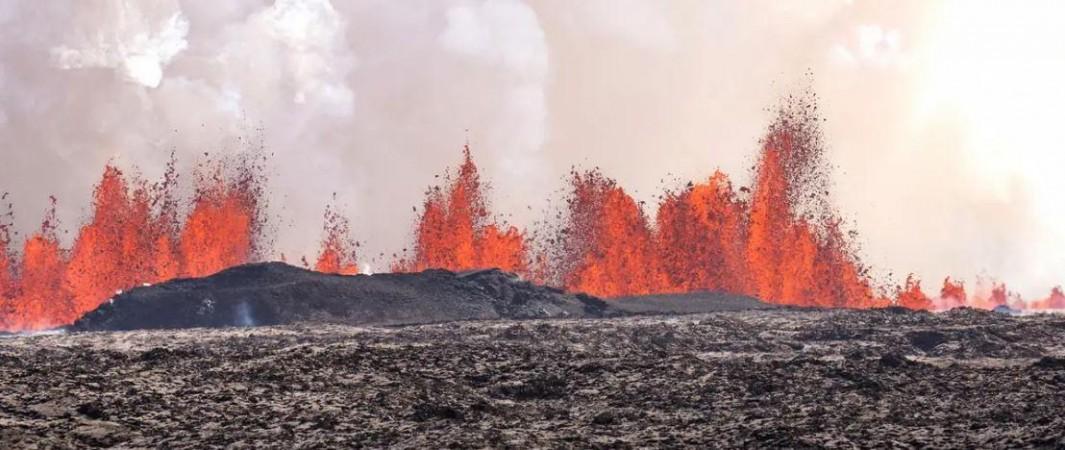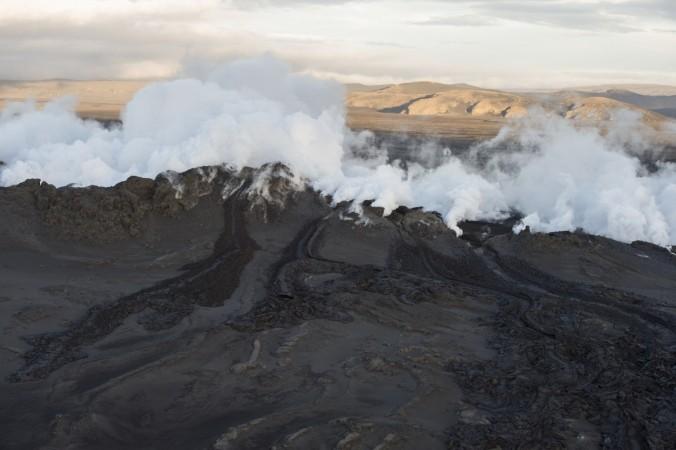
The eruption began at 9:26 p.m. local time (2126 GMT), and follows a series of small yet intense earthquakes that started at 8:48 p.m. (2048 GMT) in the Sundhnuks crater series, Xinhua news agency reported.
Lava continues to spew from the crater close to the town of Grindavik in the south of the peninsula, according to RUV, Iceland's national public-service broadcasting organisation, citing the Icelandic Meteorological Office.
According to RUV, significant seismic activity is reported at the northern end of the crater, including a 4-magnitude quake that struck around 11:30 p.m. local time (2330 GMT).
Benedikt Ofeigsson, an expert from the Icelandic Meteorological Office, told RUV that this eruption was similar to the previous two.

Recently, a 12-meter defence wall has been constructed to protect the power plant in Svartsengi. Vidir Reynisson, a senior Icelandic police officer, said that defences in the area are prepared.
ISAVIA, the national airport and air navigation service provider of Iceland, confirmed that the volcanic activity has not disrupted air travel via Keflavik International Airport, located at the tip of the Reykjanes Peninsula.
Since 2021, the Reykjanes Peninsula has seen increased seismic activity, including several volcanic eruptions. The previous eruption on the Reykjanes Peninsula occurred on May 29, 2024.
(With inputs from IANS)
















